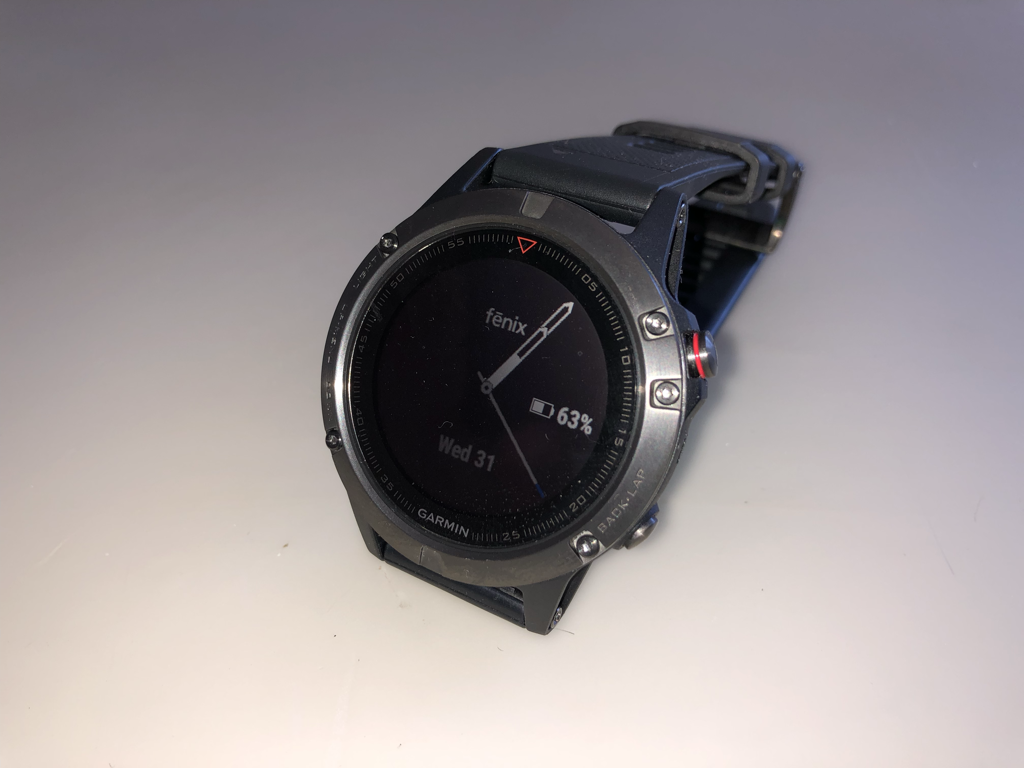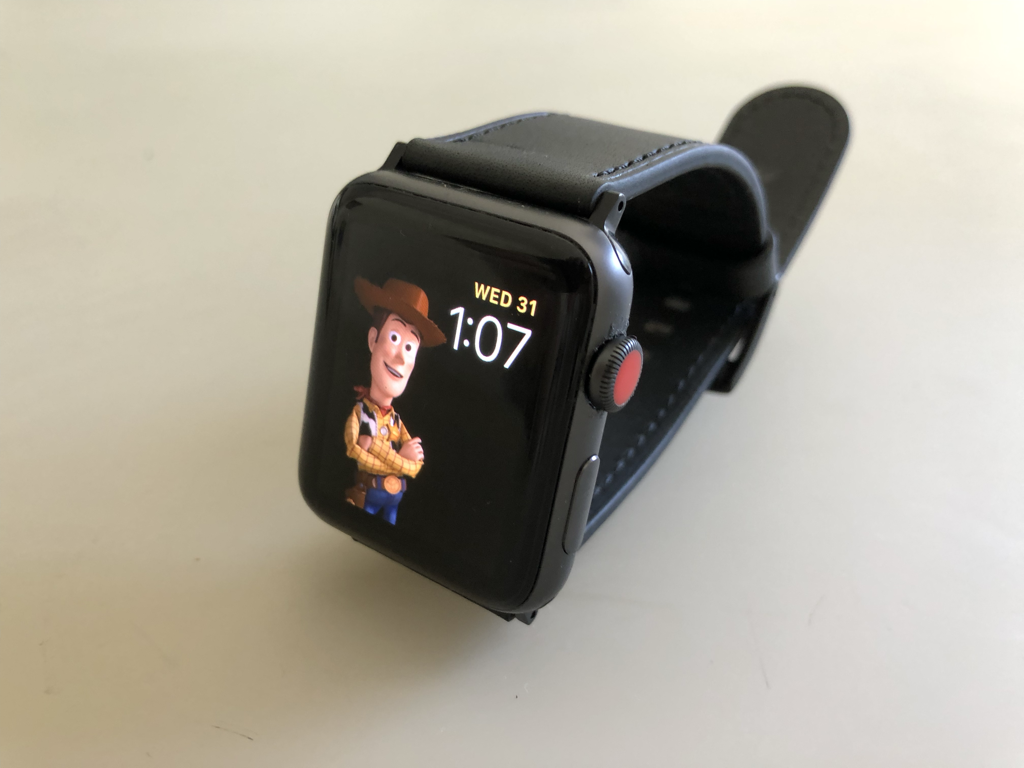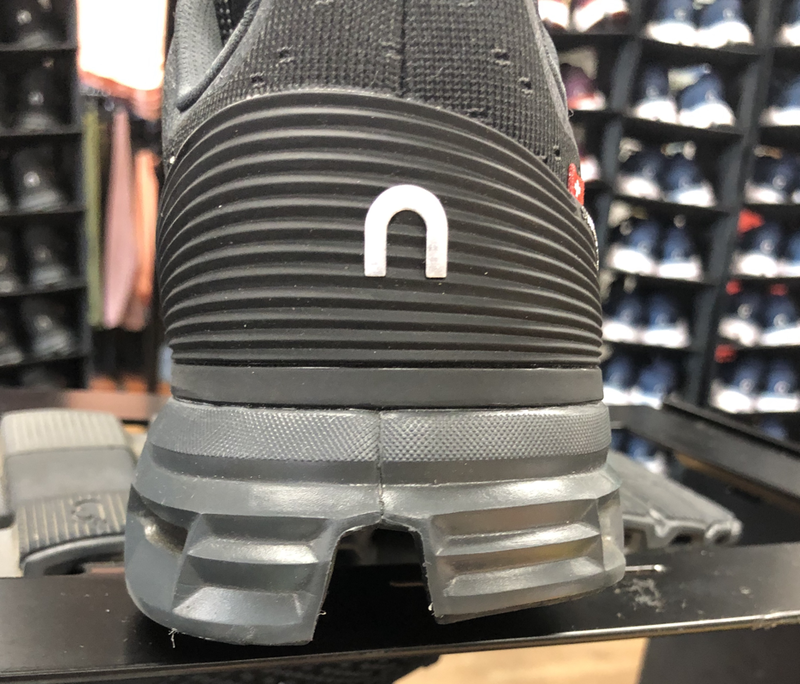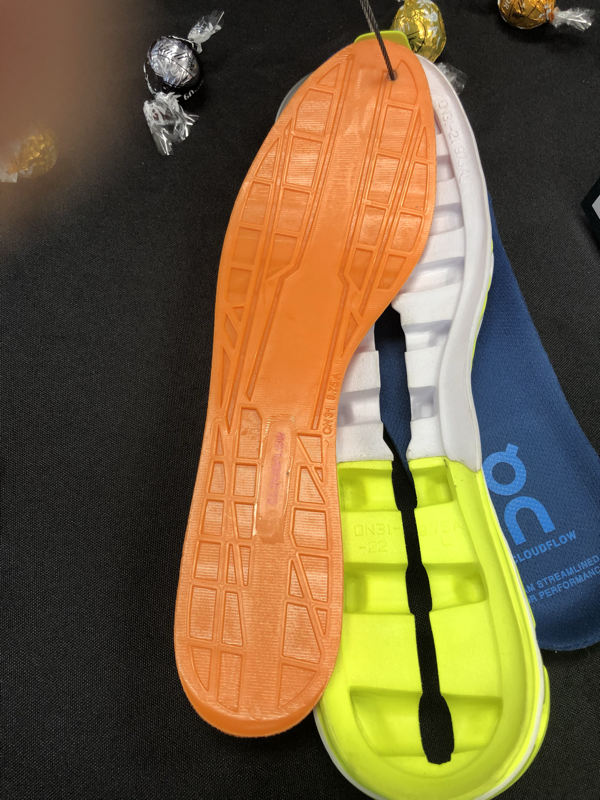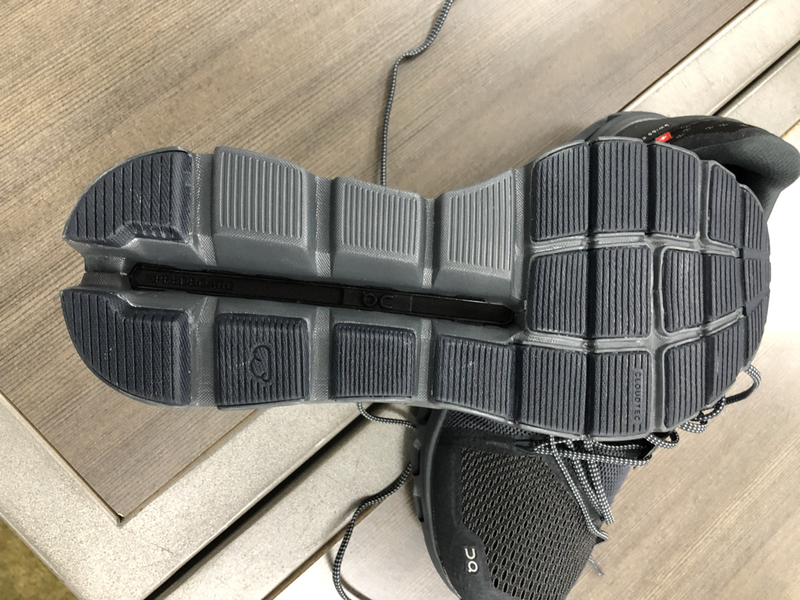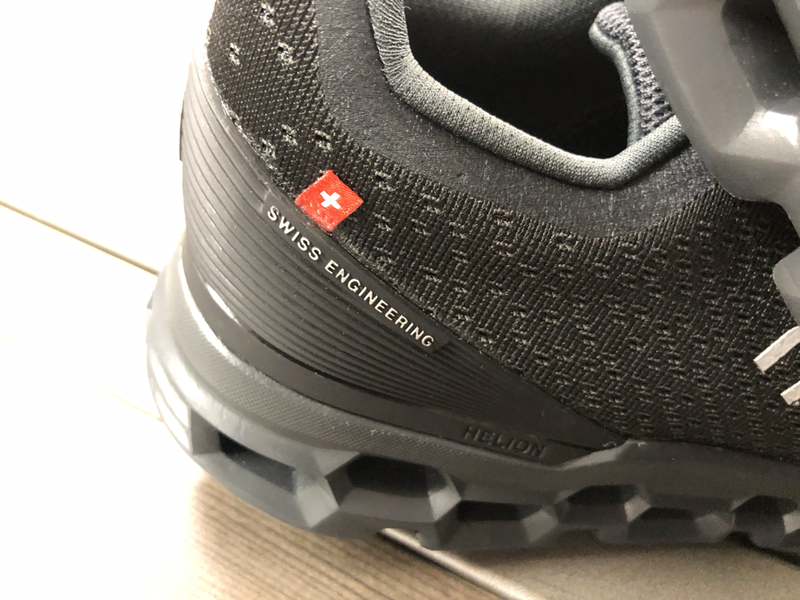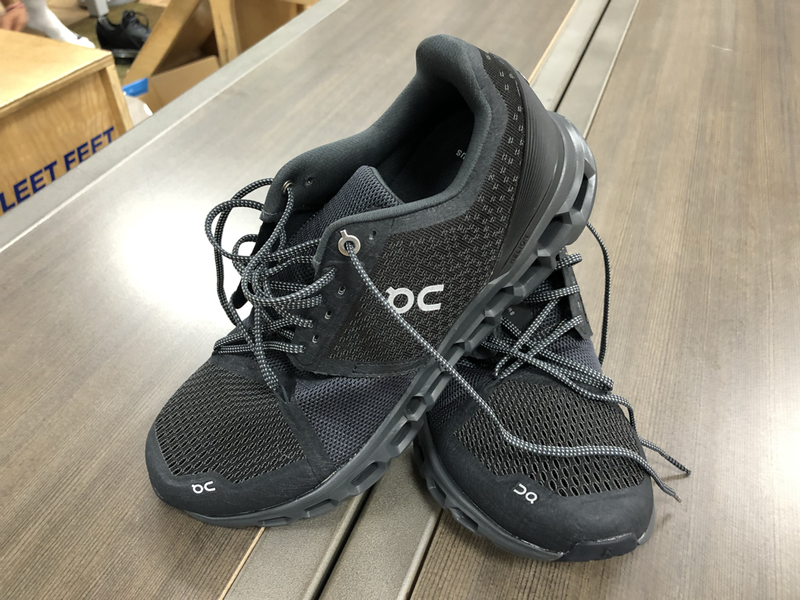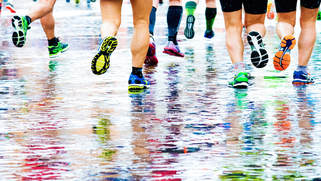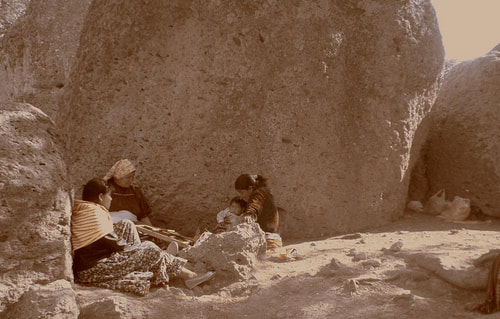|
As a long time Garmin user going back to the non rechargeable 101 brick that came out in 2003 and then the 305 a few years later it is heard to stray away from something that has always worked and worked well for the most part. 2012 the 920XT which was a big improvement over previous models. For the last few years I have been using my Applewatch, but I’ll admit I do miss the always on and functionality of a true sports/athletic watch. Honestly the touchscreen is a bit annoying while running, although I do like having music sometimes as I use a good amount of the Apple ecosystem including Apple Music. With so many great sport smartwatches nowadays which one to invest your dollars towards is a tough decision. Which watch? Another Garmin or something new. About 4 months ago I tested several watches from Garmin including a Fenix and several Forerunners. The Fenix was awesome, yet on the heavy side and the Forerunners stopped working after a few days. In the meantime another brand quietly has been picking popularity. Mmmm, who? What? I’ll get to that soon. Has Garmin been surpassed by the competition? There are so many options nowadays like Sunnto, Polar and even Casio. I am sure there is more than just those well known options. In fact, I know there is and it is Coros. Who? Coros!!! Haven't heard of them? You will. I mean you are, right now. 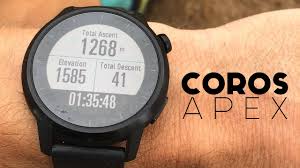 So what is all the big buzz? I believe it is battery life and value. Coros is very strong in this department, but that not to say the other guys won’t catch up. With battery life up to 150 hours and even 60 hours in full GPS mode. Those are seriously good specs. So they must be expensive and they are, but not compared to Garmin. While Coros goes up to $700 at the time of this article, Garmin current Fenix line starts at $600. Unless you find an older Fenix like the 5, 5 Plus or even the 3 HR Sapphire Edition, which are still awesome Garmin watches on sale and even then they are usually still more than most Coros watches. See Coros is still on their first run of watches so they really can’t have anything on sale nor do they need to at this point. Most Coros are very well priced. Have they changed the game with price and simply amazing battery life? Let’s find out. Coros start at $200 for the 25 hour GPS Pace or $350 for the very popular Apex with 35 hours of GPS. These don’t compete with Garmin’s Forerunner 35 or newer 45 with their 13 hour GPS battery life at $200. Coros’s $200 Pace is really competing with the Garmin 245 series which is at $300 with it’s 24 hours in GPS. That’s make the Coros $100 less for the category. And the Coros Apex which closer in price of $350 has way more battery life at 35 hours GPS than any of the Garmins anywhere that price. The closest Garmin in battery life is the 945 Forerunner which is $599 and sometimes on sale for $499. That is a lot more than the Coros at Apex $350. 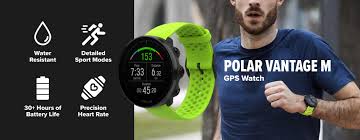 So you can see why Coros is getting a lot of attention. The mobile app that works with the watches is also getting very good feedback. Being able to customize the watch faces and functionality on the phone app instead of on the watch is really nice. What about the other guys like Sunnto and Polar? Will while they are really good they are behind. I would say the Polar Vantage M and Suunto 9 are both really worth looking into. Both have great battery life and are lightweight. I would say the weakest point for them is their mobile app’s. Although I think Polar’s is the better of the two.  Back to Garmin. What about the Garmin Fenix line of watches? They have good battery life, don’t they? The new Fenix 6X’s Solar Edition does with their new Sony chips which drain battery much slower. We’re looking at 60 hours GPS and 120 hours in battery max mode which a substantial improvement from the Fenix 5X Plus’s 32 hours GPS and max battery of 70 hours. That’s almost double. And with a $1000 price tag it oughta be. Problems is the Coro’s are a lot less expensive and much lighter weight when compared and the phone app has some advantages as well like customizing the watch face from the app instead of menus on the watch. For me it came down these options. Sunnto 9 with its amazing battery life, but the mobile app integration was sub par. Polar Vantage M with it’s amazing heart rate monitor and lightweight feel. Coro’s Apex with its amazing battery life, mobile app integration and price. Recently Polar and Suunto both had a great sale making them very attraction. Coros on the other hand had a two watch deal in which you get 20% off the second and lower priced watch. Personally I thought that was a bit lukewarm for me when compared to other holiday offerings. They possibly would have sold me if they had done 15% off a single watch. I believe they should have done that and by what I read from other customers they seem to agree with me on that. Unfortunately when a watch is $300+ I and most people really don’t need two watches. I get it as their watches are very well priced to begin with, but heck it’s the holiday time. Get it, TIME. 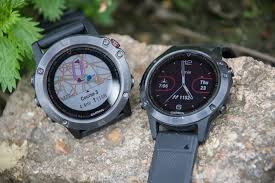 So what did I end up going with? By now I assume you can guess it. Yep another Garmin. I just could not pass on the Garmin holiday deal on the older Garmin 5X for 50% off from $599 down to $299. Still not cheap, but I kept my last Garmin 5 years. Despite being a tad bigger than I would have liked and the battery life being only 20 hours in GPS and 35 hours in Ultratrac mode I wanted a watch mostly for my combo hiking and a little running mix. I can’t imagine doing anything longer than 24 hours. I think 12 hours is more my vibe. I also like the addition of full color maps and the more rugged design. The Fenix 5X is certainly sharp enough looking to wear around and even a dinner party. Not to mention the fact that the mobile app is solid and I only need one app for both by watches. I have my Forerunner 35 for short runs and my Fenix 5X for my long hikes. Lastly, I like that I was able to purchase the Garmin Fenix 5X at Best Buy. I know, I know it is a big retailer. But, hear me out. They offer a very important “add on” to the watch. They offer Geek Squad protection and Total Tech Support which basically covers anything and everything that could go wrong with any of my devices including both my Garmin watches. This means if the watch stops working, the screen blanks out, the battery dies and even if I slip while hiking and crack the screen. It’s all covered and I get a new watch and yes this has happened to me. I hit my Applewatch while hiking once and cracked the screen. I had passed my Applecare warranty. Not a good day.
Okay, one more thing. I feel like Columbo “for those who know”. Which watch do I recommend for you? I can’t say exactly, but I can say for sure check out the Coros watches as they seem to have really nailed the whole package as a lightweight watch with incredible battery life, great mobile app and very competitive prices. Not to mention their customer service has been top notch. Everyone I know has loved their Coros watch. With watches that start at $200 you can’t go wrong. Now if I can just get Best Buy to carry them with those warranties. Thanks for reading and as always “Run Well, Live Well” For real this time, cheers!
1 Comment
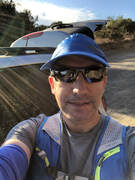 Two years ago got very ill. At one point I passed out in the middle of my running store and had to be hospitalized. I made several additional visits to the E.R. before finding out I had a tumor in my intestine. Although the tumor was benign it sure brought havoc on my life for what I believe was many years. So I have asked myself, why would a perfectly healthy and active thirty something year old male grow a tumor in my intestine? Without diving in too personally I wasn’t happy or even comfortable in my own skin. Some major life changing experiences that I wasn’t expecting nor ready for. I believe the combination of certain depression meds and my head saying I wish I was dead made my body find its own way to make it happen. Die that is. It is interesting as I really didn’t want to die, I just didn’t want to go on living the life I was experiencing. I am usually quite good at controlling my life's decisions, but something or I shall I say someone got me off my typical direction. Anyway, this tumor first showed its intent when I got my first blood clot in my left leg. This was my first of two clots over a two year ordeal and this was just the beginning of my hell. I remember almost passing out at a friends wedding party. I had to excuse myself and find a couch for about 20 minutes as I sweated like a rain forest. After a long battle of trying to stay in some kind of athletic shape despite my calves cramping regularly due to the clots . As I mentioned May 25th, 2017 I passed out in Runnergy my running store. I owe a great amount of appreciation for my staff Gen which was there and made me feel I was going to be okay. Just her presents was all I needed, at least until the ambulance arrived. The tumor was causing me to be anemic, low on iron. Seems like an easy fix, right? Eat more iron and I’ll be okay. Not knowing at the time of the tumor at this time. And so I took iron supplements and felt somewhat better, not completely and only until my next step to what I call my ultimate hell. After my scare in May I was back to what was my “normal” during this time. Not a normal “normal”. On meds for my depression and now on more meds for my clots, plus iron. At this time I had been wishing to die for a while. I eventually bought a gun which thankfully came up during therapy and was taken from my possession. Yes, it got pretty dark. The worst part of it was when my stomach just couldn’t hold food down anymore and we couldn’t figure out why. This went on for 4 months. I honestly don’t know how I was working all day with my stomach cramping and then make it home only to vomit what little to nothing that was in there. I would even go for a walk/run with different groups with my stomach and my calves cramping then I would go home after and vomit before falling asleep. I remember once I drove across the valley to run with the Pitfire Run Group which I had to turn around and just barely make it home it in time to, well you know throw up. I even threw up my birthday dinner in early December 2017, at that time I had lost over 20lbs. I am not a big guy, 145lbs, so I was 125lbs. I know it sounds crazy, but on January 4th, 2018 on a Thursday I actually went to the gym in hope of some kind of feeling “old normal” by getting on the treadmill at 24 Hour Fitness near me. I cried the whole time, all ten minutes until I couldn’t take anymore. (crying right now), sorry. Two days later I was back in the E.R. getting a scan which showed a blockage. Thank you to my dad for taking me again. We joked about making sure I don’t throw up in his car. As much as he loves his car he made very clear he didn’t care. I don’t remember much after the scan other than the doctor saying there is a blockage and we need to go in immediately. I woke up in the hospital with only the second scar I have ever had and tube down my nose and throat. I really hope to never experience that again. Really! All the mediation practice I had done the last couple years truly gave me the skills to stay calm. And boy did I need it. Opening me up revealed a tumor that was causing the blockage. By removing it I lost approximately 6 inches of my intestine, but gained back my life and love of running. 3 months after surgery I tried my first attempt to get back to running and a customer at Runnergy who happened to be a registered nurse and suggested to me be careful and wait at least 6 months to a year and darn it she was so right. It was about 9 months until I could run with little pins and needles where my surgery was. The road to recovery and redemption begins. It was January 6th, 2019 exactly a year after my surgery I ran my first race the Resolution Relays which is put on by my old time running club New Basin Blues and yes, no pins and needles. I felt winded and pushed in that good way, not like I was going to die or wish I would. It wasn’t till about June 2019 (18 months after surgery) that I really felt my body was on the way back and I mean way back to, like 15 years ago or even longer. September is when I began feeling like I think I can do this and start pushing it. With motivation and inspiration by other amazing athletes mainly being Rich Roll who is a vegan athlete, author, motivational speaker and content creator. I began eating a mostly vegetable diet, hitting the gym 3-4 times a week and I am learning to train like old times again. Vegetable diet for me is tricky as I have very thick blood and have to be careful with my vitamin K and I am prone to blood clots. I really don’t want to be on blood meds again. Although I know there are many people who have lived with much more harsh and life changing situations living in what was “my hell” taught me I am stronger and tougher than I believed I was. Something I would never had believed before. After this experience I now know I can handle more discomfort and in some odd way I am in search of it. I guess it is true as they say “what doesn’t kill you, makes you stronger”. What’s next for me? Will I just ran my first half marathon the Griffith Park Trail Half. My first half in like 10+ years and felt amazing. Okay I walk/hike/run. Like I said I am not fast. My goal now is to stay healthy, get faster, go farther and be a lot stronger because I know I may not get another chance. Thank you so very much for reading this. It wasn’t easy to write. I hope you come back for my future blogs, videos and more.  I am not an expert on the subject of eating disorders. The following is of my own opinions. I am new to writing and was never an English or literature major so my apologies for less than perfect writing skills. It is a practice. Names have been excluded to respect people's privacy. I found myself reading a blog from a particular accomplished female athlete who has an eating disorder. Something I know a little about. I once dated an amazing person who has anorexia/ bulimia who would starve herself and eat foods with little to no calories. She is a very sweet and lovely person, we’re still friends nearly 20 years later. At the time her relationship with food became too much for her to continue to our relationship so our lives grew apart and recently have reconnected and remain as good friends. Can’t have too many good friends. So, back to my point. An extremely capable female athlete has spoken openly about her eating disorder and it hit a nerve with me. See, she mentions about guilt, shame and media. I have a bit of a problem with how people live with shame and guilt, especially how the media only talks about it for headline sake. I hold plenty of shame and guilt, so I know how much it can eat away at you. Athletes, actors, etc are used on magazine covers to attract a certain image that they know brings in the dollars. Does it work? Heck yeah it works. Is it right? Fuck no, it’s so wrong. Does it leave many people feeling like crap because they don’t look that way and perhaps they should? What do you think? I never thought about that a person feeling guilty about doing what they need to for their job, because they thought it was possibly sending a bad message of self image. Do models feel like they are sending out the wrong message about body image? This is their job after all, isn’t it? They knowingly walk the catwalk looking what is considered too skinny. Do they keep the weight off because it is required for the job or is there another underlying reason. What I am asking is “does the job give means to the eating disorder”? Does the model or athlete choose that profession because it provides a rational reason to be that skinny? Makes sense. I can see a person saying “you don’t understand, I need to control my diet for my job”. One thing is for sure, it is all about CONTROL. Will, something has control of someone. Lots of people do things they don’t like for their job. Is being a certain shape simply part of the job or should the job or industry wake up and be realistic and more importantly humane. Is an industry that requires an unhealthy lifestyle abusive or okay? What about in the case of this super star athlete? No one will argue that being lighter weight has its benefits for the job. Moving less weight is an advantage. Even Nike founder Bowermen designed his shoes to be as light as possible. If all is equal except for the weight, lighter will win. And the job is to win, right? My problem isn’t with what may be needed for the job and what may or may not be an advantage. My problem is with the shame and guilt. The real disorder to me is with those two things created as a response to how the media and society play us. This puddle of mind shit we all dip our heads into and create a world of sick people. NO ONE should feel shame or guilt for having a different relationship with food or anything else for that matter. And for those who would even give a little hardship to those who are living with this constant challenge with food and mental conditions are the ones with the real problem. To me those people are bullies. There should be no guilt or shame to it. People and the media should be there with open arms to support people who are dealing with mental issues weather it is with food, addiction or depression. I know this isn’t the case everywhere making it a more uphill battle. Anyone who is not comfortable talking about their relationship with food in my opinion should start talking about it right now. Get out there and start talking about it. Get a little comfortable talking about. Heck, I’ll talk with you. Start sharing about it now. Too embarrassed? I’m giving a liscence right now to not give a fuck. Trust me more people will support you than you think. I see it daily. I don’t want to speak for the athlete who sparked this blog, but I would guess she feels so much better coming out and speaking publicly about it. I always tell my daughter she can tell me anything and it’s true. I am sure it wasn’t easy for that athlete and probably still isn’t, but good for her. She doesn’t just start races, she starts conversations, I greatly thank her for that. I know from my own experience it is much better to just give up control and not give a fuck. It sure beats holding it in and crippling yourself to the point of harm or worse. I’ll be the first to tell you that I am not a weight or image export or psychologist. I am just a simple guy who thinks perhaps like my 6 year old daughter in simple terms. It is like running. Focus on that one step and then the next step and the next step and the next step, I think you got my point. Don’t get overwhelmed with the whole race or process of healing yourself. First step is to open your mouth...and speak. The words don’t need to come out pretty and they probably won’t. They just need to be heard. Trust me, there are people who will listen. 10 Reason to get a GPS Watch in 2019 Here is a little secret to successful training wither it is for a coming 5k or a marathon in 6 months. It is the GPS watch which stands for Global Position Satellite. Some athletes who use it including myself say it is like cheating. Here are 10 reasons why and why you might want to start cheatinging as well. IF YOU WANT TO WATCH MY VIDEO INSTEAD CLICK HERE. https://youtu.be/_kUV5ZEHb7M Reason #1 is the most obvious accurate mileage for your workouts. If you’re training for a marathon, which if you don’t know it is 26.2 miles and you need to run 18 miles you don’t want to find out that you actually only did 15. As embarrassing as it is I once ran what I thought was a 7 mile run only to find out it was 4.5 miles. My mother actually was the one who said “sone that is in no way 7 miles, drive it”. Ooy! She was right. Bottom line you want to know your mileage and you want it accurate. Reason #2 If your goal is to run or walk your event/race in a specific time you are going to need to train at a specific pace. Such as if your goal is to break a 3 hour marathon you’ll need to run under a 6:50 minute mile pace according to my Google assistant. GPS watches can not only display your current pace some can display your average pace which may be more important for you timely goal. Reason #3 Many GPS watches not only can wirelessly connect to a very accurate heart rate strap that can be worn across your chest, but many current GPS watches come with a built in wrist heart rate reader as part of the watch itself. Although not as accurate as a chest strap unit they are much more convenient and practical for most of us, I included. Your heart can tell you a lot about your training and health so I highly recommend getting a GPS watch that includes a built in heart rate monitor. More important I recommend understanding at least the basics of how to utilize the all so important information your heart can provide. Reason #4 Some, not all GPS watches can display your cadence. What is that you ask? Cadence is how many steps or in the bike world how many time you spin the pedals around per minute. Again for you runners. Cadence is how many steps per minute, aka SPM. This piece of information is helpful as it offers a clear presentation of your overall running technique and sometimes conditioning. A known sweet spot is 180 per minute, that 90 per side. Left foot 90 and right foot 90 just to be clear. Too low of a number like 140 means your out of shape and/or your over striding. On the other end 220 or more is too many and isn’t efficient resulting in early burn out. Many running form issues can be corrected simply by raising your SPM. Keep in mind don’t jump straight up to 180. Anyway, it is great information that GPS watch can provide. Reason #5 Unlike traditional stopwatches GPS watches typically have rechargeable batteries which is much better than dumping batteries out. Just beware of no name brands with junky batteries. Also there are a big range of battery charge life spans. Lower price point GPS watches may only have 3-4 hours which will be a problem if your planning to do a marathon. Others like the Garmin Fenix 5 shown have a 24 hour battery like and can even be set up to 40 hours. This is great for someone doing an ultra marathon, but keep in mind this setting will reduce it accuracy for distance. Reason #6 Here is mouth full. Collection of past training information. What the what? Many GPS watches connect wirelessly to an app you can install on your smartphone. This app can collect and store all your workouts so you can look back at them. Many coaches recommend and even require you have this so they can log in and see your training performance and how your hopefully improving. This is one of my favorite features as it is so much easier to look at all that information on a smartphone screen compared to a small low resolution watch screen. Reason #7 Have you ever walked, hiked or ran, heck biked a trail and had no idea how to get back to the start? Well, let me tell ya, it sucks especially when it's 100 degrees. Anyway, this is a fairly high end feature, but some GPS watches actually can display maps. YEP! Maps with directions back to where you started. This feature ranges from simple bread crumb maps and others have complete in color maps with trail heads to help direct your back to the start. Very helpful. Unfortunately usually only on pricier watch options. A great start with basic bread crumbs is the Garmin Instinct. I’ll talk about that more later on. Reason #8 Okay we got most of the key training and functional reasons to get a GPS watch, but here just a cool everyday reason. Many if not all can be used as an Activity Tracker like a Fitbit. If fact many Fitbits have GPS and can be used as both an Activity Tracker and a training watch for light use. Basically your not gonna get much use from it training for a 100 miler, but put to a half marathon is possible as long as it has a great battery or your really fast. GPS will drain the battery so buy accordingly. Also keep in mind after 6-12 months batteries can lose their steam so again go with something that has better battery life for anything over a 10K. And just Incase you don’t know a 10K is 6.2 miles and a hapl marathon is 13.1. Rule #7 Never assume!
Reason #9 Beyond being just an Activity Trainer many GPS watches have Smartwatch features like connection to your phone and alerting you of emails and text messages. This is great if you want one watch for training, activity tracking and work when you always need to know when someone is trying to reach you. Some like the Applewatch can even do phone calls. Yes, I once got a phone call in the middle of a run and yes it is very annoying. Luckily you can turn this feature off which not only allows you to complete you workout in peace, but great saves your battery. Reason #10 okay this is a fairly new reason, but all so important. Only a few GPS watches have this feature, but I assume many going forward will include this and it is Emergency Alerts in the case of an unfortunate situation happens like you crash on your bike or you have a heart attack. Sadly these things do happen. In my case I almost had a very bad day on a trail run a couple years ago in 106 degree weather. This feature would have at least made me feel much more safe. In the meantime, I strongly recommend Road ID. Check them out, great product and company and they guy with that had the heart attack. Well, Road ID saved his life. Okay all. That is my top 10 reasons to make a GPS watch part of your training equipment. Hope that helps and let me know what you think or if you have any other questions please leave it below. I’ll be honest, I haven’t had much luck with On running shoes for my feet. They’re design is kinda the opposite of what I typically wear which is Altra. Altra’s have a wide”natural” foot shape toe box and no heel lift, although I add a heel cushion for 2-3 heel lift.
 L.A. Marathon is approaching. Will you be ready? From my experience about 20% of runners I meet are not ready on race day. So, do they finish. Actually most of them do. Did it go as planned? No. How can you be ready on March 24th and concur the 26.2 L.A. Marathon? Hi, I'm Jeff and I have been running since 1984 and have 5 L.A. Marathons including one that was in near 100 degree weather. Here are my suggestions to get you prepared for your day in the park.
As it is rain season you'll find yourself debating on getting wet to get in the miles. Even I have trouble getting started in the rain. But, I can also say that once I get going it is no less than liberating and it may be beneficial. Here are some benefits of running in the rain.
Now for some tips on running in the rain safely.
Lastly, have fun! Kids love splashing in the rain and so can you! You are here: Home / food / What You Can Learn from the Tarahumara July 8, 2011 By Yael Grauer12/4/2018 Nestled in the high plateaus of the Sierra Madre Mountains in Northern Mexico, there’s a tribe of exceptional endurance runners known as the Tarahumara. They call themselves the Rarámuri, or “running people,” and, in fact, long distance running is a part of who they are. The widely dispersed settlements and mountainous terrain they inhabit makes endurance running a necessity, but the Tarahumara have taken it to a whole new level, often running up to 500 miles a week. Tarahumara runners competed in the Leadville 100, an ultramarathon which is so challenging that less than half of its participants even complete the race. Tarahumara runners not only completed the race in 1992 and 1994, but won the event both times. In fact, the first place winner in 1992 was Victoriano Churro, a Tarahumara man who was 52 years old! In addition to their running prowess, the Tarahumara are also known for their good health. In fact, a relatively recent National Geographic study found nearly nonexistent levels of diabetes, vascular disease and colorectal cancer in tribe members tested. Similarly, a 1991 study in the New England Journal of Medicine shows stunningly low levels of high blood pressure and heart disease in those tested, as well as low total cholesterol and LDL. Naturally, one would wonder what the Tarahumara Indians eat. Their diet is largely plant-based, supplemented with small amounts of sheep, beef, goat and freshwater fish. It is not surprising that the Tarahumara eat this way. In fact, some of the benefits of a plant-rich diet include higher levels of certain vitamins, minerals, phytonutrients, anti-oxidants, and essential fatty acids. But it’s important to note that although some people choose a vegetarian or vegan diet for various reasons, it is not necessary to avoid meat completely to receive the health benefits of a plant- based diet. Simply increasing the amount of vegetables, legumes, nuts, seeds and fruits should do the trick. Although the Tarahumara do not eat a lot of meat, a 1979 study in the American Journal of Clinical Nutrition showed that their diet exceeded the UN’s recommended daily protein intake by more than 50%. This can be accomplished by focusing on protein-rich plant foods. Indeed, the Tarahumara eat plenty of beans, squash, chili peppers and wild greens, all foods with optimal amounts of protein (over 20%.) Here are some plant-based protein-rich options. Spinach (39% protein) Asparagus (34% protein) Broccoli (27% protein) Squash (24% protein) Artichokes (22% protein) Perhaps because of their massively high volume of exercise, the Tarahumara can handle higher amounts of whole grain carbohydrates (such as pinole, made out of corn) than I would typically recommend. Remember, the Tarahumara need to fuel their long distance running–often 70 miles a day! 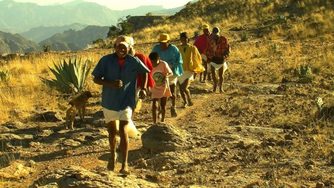 Running such long distances year-round is rare in our culture. For those of us that are clocking in less than 500 miles a week, research indicates that high-carbohydrate diets used long-term can negatively affect both body fat percentage and insulin levels–especially if the carbohydrate sources are starchy, sugary and high on the glycemic index. However, properly timed higher carbohydrate meals can help maintain muscle and liver glycogen during periods of intense training, while still keeping insulin levels and body composition in check. Higher carbohydrate diets rich in starchy carbs (or maybe even unprocessed whole grains, if you must) three or four days before a long-duration endurance competition (such as a marathon) can improve performance by increasing stores of muscle and liver glycogen, leading to better athletic performance and preventing an energy crash when glycogen stores are depleted. So what can you learn from the Tarahumara? Bottom line: • Plant foods provide vitamins, minerals, phytonutrients, antioxidants and essential fatty acids. • If you do eat meat, supplement your diet with plenty of vegetables, nuts, seeds and fruits. • If you eat a plant-based diet, make sure you are eating protein-rich plant foods, especially green vegetables. • Training for long-duration endurance competitions (such as marathons) may require a higher carb intake for a short period of time. Wild is the way to goIf you don’t know how to get food anywhere except the local supermarket, you may be fascinated to know that David Wolfe can find all kinds of food in wild nature. Not only that but wild food has more energy and vitality so is better for your health. Even the food you grow in your own garden will have more nutrients and energy, especially if you have nourished that soil with compost and local minerals.
You don’t have to go to the gym to be fitHate going to the gym? David’s alternative is to get out in the woods and gather food. He also does useful work like chopping wood, digging and planting. He is not only getting a workout but is getting things he needs for survival; he states that “work is the original workout”. The connection of being out in nature provides energy and feelings of ecstasy for him. He gets a peaceful connection to those who have come before him. There has been a resurgence of interest in gardening for producing food and David encourages whatever type of gardening that is feasible for you. It can be replacing your lawn with raised beds for vegetables, growing herbs, having houseplants or just sprouting seeds. All of these connect you to the magic of growth. He talks about how to get more protein from plant sources, something that is certainly needed for a sustainable world. He started gardening by buying organic foods, throwing the scraps into a compost heap in the backyard and seeing what came up without any prior knowledge about what to do. Trees are valuable for more than just taking in carbon dioxide and giving off oxygen, although that is certainly critical. David explains how they also affect that soil and the water table and are out greatest resource. North America is fortunate to still have large areas of forest that need to be protected and David helps us see why we need to plant more. Please visit Well.Org for health and wellness articles like this. |
|
